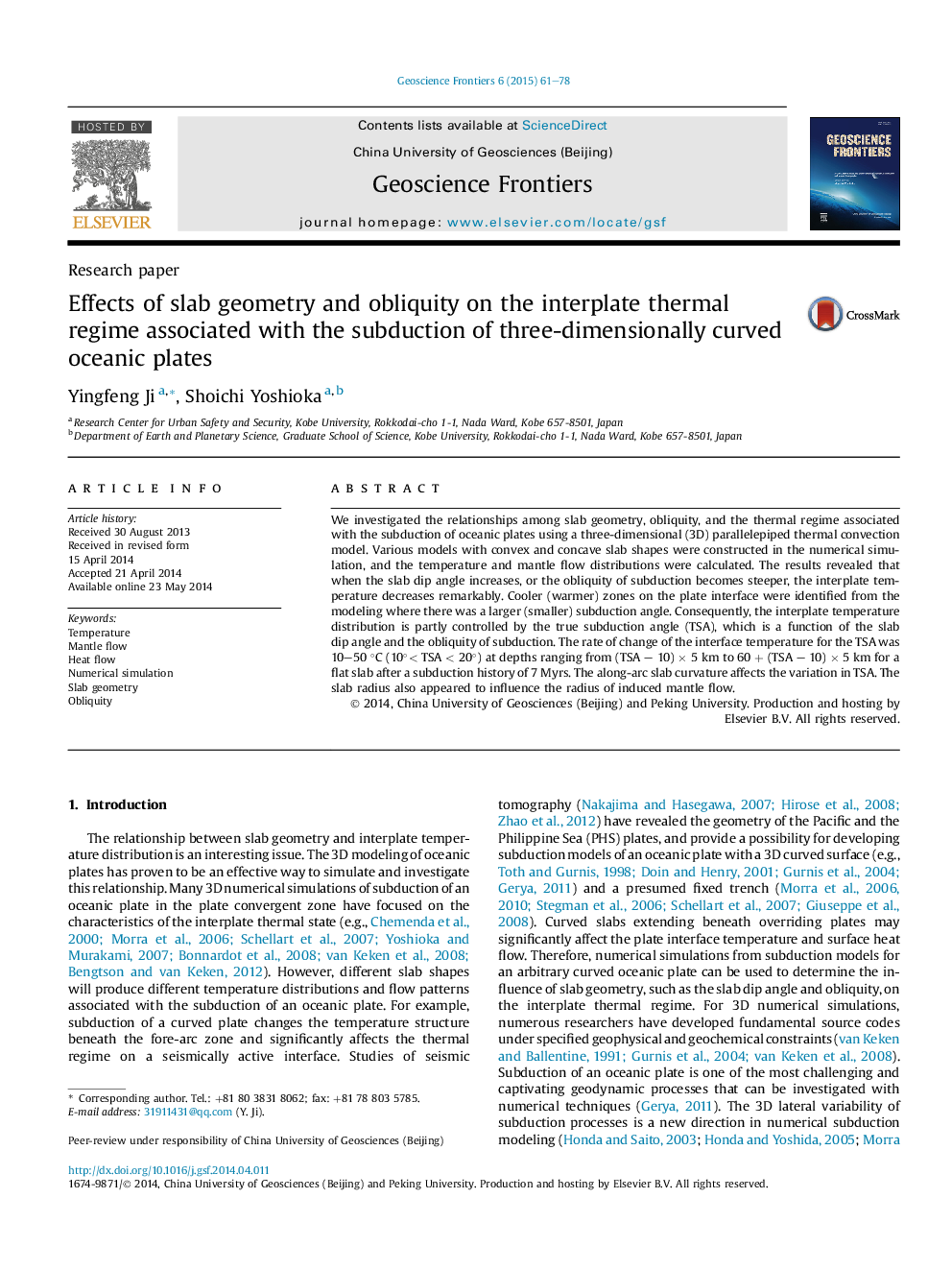| Article ID | Journal | Published Year | Pages | File Type |
|---|---|---|---|---|
| 4681558 | Geoscience Frontiers | 2015 | 18 Pages |
•Model of subducting oceanic plates with arbitrary geometry and thickness was developed.•Temperature and mantle flows for 3-D subduction of oceanic plates were investigated.•Subduction angle was found to be a critical factor on the thermal regime of a slab.
We investigated the relationships among slab geometry, obliquity, and the thermal regime associated with the subduction of oceanic plates using a three-dimensional (3D) parallelepiped thermal convection model. Various models with convex and concave slab shapes were constructed in the numerical simulation, and the temperature and mantle flow distributions were calculated. The results revealed that when the slab dip angle increases, or the obliquity of subduction becomes steeper, the interplate temperature decreases remarkably. Cooler (warmer) zones on the plate interface were identified from the modeling where there was a larger (smaller) subduction angle. Consequently, the interplate temperature distribution is partly controlled by the true subduction angle (TSA), which is a function of the slab dip angle and the obliquity of subduction. The rate of change of the interface temperature for the TSA was 10–50 °C (10°< TSA < 20°) at depths ranging from (TSA – 10) × 5 km to 60 + (TSA – 10) × 5 km for a flat slab after a subduction history of 7 Myrs. The along-arc slab curvature affects the variation in TSA. The slab radius also appeared to influence the radius of induced mantle flow.
Graphical abstractFigure optionsDownload full-size imageDownload as PowerPoint slide
